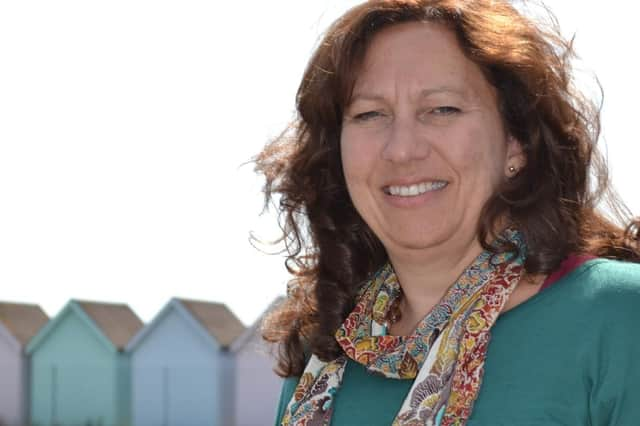Alert as number of primary school classes over 30 on the rise in Portsmouth


Portsmouth and Hampshire are part of a national picture in which every region outside of London has seen an increase in the number of infant children in classes over 30.
Analysis of research carried out by the House of Commons shows the number of children in key stage one classes over 30 has almost doubled.
Advertisement
Hide AdAdvertisement
Hide AdIn 2011 there were 43,130 children in classes over 30 which increased to 82,358 by 2018. This accounts for 4.9 per cent of pupils compared to 2.9 per cent in 2011.
Increases have taken place despite a statutory school admissions policy which states: '˜No infant class may contain more than 30 pupils while an ordinary teaching session is conducted by a single school teacher.'
Data provided by Portsmouth Council shows that authority has managed to keep average class sizes below 30 but there is evidence of a growing number of schools with class sizes in excess of this figure.
In 2011 the average Key Stage 1 '“ children aged four to seven '“ class size in Portsmouth was 26.6 which has increased to 28.1 by 2018 '“ 0.8 above the national average of 27.3. At Key Stage 2, which covers junior school age from eight to 11, the picture is more positive with an average class size of 27.6 compared to the national average of 27.8.
Advertisement
Hide AdAdvertisement
Hide AdPortsmouth's cabinet member for education, Suzy Horton, said: '˜We're pleased to see that the council's investment in creating 1700 additional school places in primary schools is paying off '“Â we have consistently maintained class sizes of below 30 since 2011.'
Despite maintaining average classes below 30, joint research from the education unions illustrates an increasing number of primary school classes of 30 and over in Portsmouth and surrounding areas.
Data taken from their website shows in 2016 there were 14 out of 37 of the city's primary schools with average class sizes of 30 plus. This constitutes 38 per cent compared to 20 per cent in the previous year. One primary school is identified as having had an average class size of 33 for two consecutive years.
In Fareham it is a similar picture with 8 out of 21 schools (39 per cent) with average class sizes of 30 and over. In Havant and Gosport the situation is less pronounced with 28 per cent and 23 per cent respectively. In Gosport one primary school is shown to have had had an average class size of 34 for two consecutive years.Â
Advertisement
Hide AdAdvertisement
Hide AdCouncillor Horton believes that increasing class sizes are a combination of a rising school population and diminishing pool of teachers.Â
'˜With more children entering education at the same time as less teachers are coming in combined with more leaving in the first five years or retiring early it is no surprise that class sizes will increase. The government need to recognise the problem and do something about it,' explained Cllr Horton.
Despite this picture of rising class sizes many of the region's headteachers have manged to adhere to the legal requirement of ensuring infant class sizes don't exceed 30.
Executive headteacher, Debby Marshall, oversees the Elson and Gomer Infant Schools Federation.
Advertisement
Hide AdAdvertisement
Hide AdMrs Marshall said: '˜In my two schools it has not been an issue. The only time we would go over 30 is if there was dispensation for special circumstances such as the intake of a '˜looked after child.'
Amanda Hall, headteacher at Fairfield Infant School, also believes the majority of schools in her catchment area are managing to ensure infant classes remain below 30.Â
'˜As things stand class sizes of over 30 is not something we are struggling with at the moment,' said Mrs Hall.
Â
COMMENT by Neil Fatkin, education reporter and former teacher
Advertisement
Hide AdAdvertisement
Hide AdWITH a growing number of children now being taught in classes in excess of 30 the educational ramifications for children and teachers are massive.
Shadow Education Secretary, Angela Rayner, said: '˜This situation is totally unsustainable. If Ministers really wanted to give every child the education they deserve they wouldn't pack so many infant children into one classroom.'
Whilst it is encouraging that Portsmouth has maintained average class sizes of below thirty it is a concern that averages have increased and a significant proportion of classes, more than a third in certain areas, are 30 and above.
I have experienced first-hand the difficulties of teaching classes in excess of thirty students. In my final year in the profession I had a class of 34 pupils covering a vast range of ability, including a proportion of children with special educational needs and pupils with emotional difficulties and challenging behaviour.Â
Advertisement
Hide AdAdvertisement
Hide AdTrying to differentiate work and divide your time to provide support for the needs of each individual student simply becomes impossible. Under such parameters it is often the sizeable majority of quiet students of average academic attainment who go '˜under the radar' and may suffer. Invariably time is directed to dealing with the needs of those in the class at the two extremes of the learning and behaviour spectrum.Â
The growth in class sizes I experienced were undoubtedly linked to ever decreasing budgets. With staff on average accounting for 80 percent of already overstretched school budgets when a teacher left it was sometimes seen as a reluctant way of decreasing that financial burden. Yet those now surplus students would still need to be taught, resulting in classes being amalgamated or children being filtered into other groups.
With the Local Authority already facing a recruitment and retainment crisis and the projected school population set to increase significantly the potential for class sizes continuing to grow looks inevitable.       Â
Â
Â
Â
Â